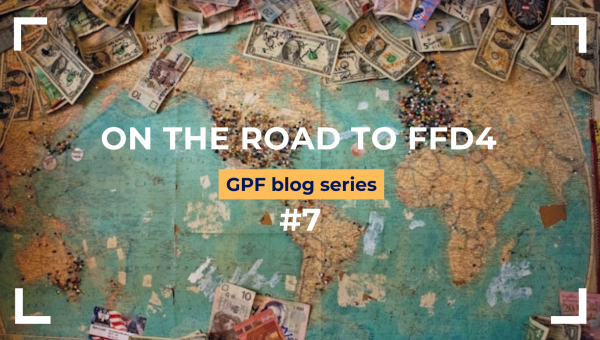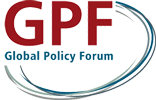News

The international community gathered at the United Nations (UN) headquarters from 3-6 December for the second Preparatory Committee meeting for the 4th International Conference on Financing for Development (FfD4), which is set to take place in Sevilla, Spain, in late June 2025. Discussions in New York clarified country priorities and positions on FfD, building on concrete proposals outlined in a previously circulated Elements Paper. The meeting also served as a test of the level of ambition.
The New York meeting was the second of four meetings convened by the Preparatory Committee. The first meeting, held in Addis Ababa, Ethiopia, in July, officially aimed to review progress on the implementation of previous international agreements on financing for development (FfD). In the months since then, there has been a flurry of negotiations on FfD-related issues, including reforms to the international financial architecture. Key events included the UN’s own Summit of the Future, the Annual Meetings of the International Monetary Fund (IMF) and the World Bank, the G20 Summit in Rio de Janeiro and the Climate Summit in Baku, which placed a strong emphasis on climate finance.
The FfD4 conference aims to serve as a convergence point for various policy-making streams. This goal is set against a challenging environment for multilateral decision-making. As UN Assistant Secretary-General Navid Hanif stated at the opening session of the Preparatory Committee meeting in New York: “If we do not deliver, the opportunity to build trust in multilateralism will be undermined.” FfD4 is widely regarded as the last opportunity to close the financing gap for achieving the Sustainable Development Goals (SDGs).
The participation from individual countries, however, was severely complicated by extremely high hotel costs in New York in December, meaning that most countries were represented through New York-based diplomats rather than experts from capitals. Although energy levels seemed subdued at the beginning of the meeting, the mood noticeably picked up as the thematic discussions started to focus on substantial issues such as fair taxation, resolving the debt crises or appropriate style and forums for international financial architecture reform.
Tax and domestic resource mobilization
Domestic resource mobilization – including taxation and tax governance – remains the cornerstone of the FfD agenda and process. However, the upcoming negotiations on the UN Framework Convention on International Tax Cooperation (FCITC), due to begin in early 2025, add confusion because they are running in parallel to the negotiations on the FfD4 outcome. However, the backlog in reforms is so large, due to the absence of effective institutions for international tax cooperation, that different member states have proposed more issues for the FCITC than it will be able to cover in its early years. The agreement is that only two topics (protocols) will be negotiated before 2028. This leaves ample room for the FfD4 process.
Emerging issues include new types of taxes, and the international cooperation needed to introduce them in a coordinated manner. While taxation of corporations and in particular the digital economy has dominated the debate in the past decade, the agenda is now expanding to include taxation of high net-worth individuals (HNWIs) and certain types of environmental taxation. The Elements Paper already proposed institutional innovations like global asset registries and country-by-country reporting for HNWIs, which are prerequisites for wealth taxation. The Preparatory Committee helped to scope UN Member States’ positions on these innovations.
Rising debt problems
Rising debt problems are emerging as a key issue for the Sevilla conference to tackle. In the decade since the Addis Ababa conference, debt levels have surged in many countries, and rising debt service costs have reduced the fiscal space for development spending. The drastic slogan “Debt kills the SDGs” has already been used at the UN’s 2023 Financing for Development Forum to describe the situation.
Institutional gaps in the area of debt crisis prevention or resolution are wide. When it comes to resolution, the only game in town remains the “Common Framework” of the G20 and Paris Club – an informal ad hoc coordination mechanism for bilateral creditors to be activated in case of debt crises in Low-Income Countries (LICs). There is no official body that could ensure the participation of multilateral or private creditors in debt restructurings, or that would cover Middle-Income Countries (MICs). Hence, most types of debt crises remain ungoverned and difficult to resolve.
The Elements Paper includes a wide range of suggestions, such as (strengthened) principles for responsible lending and borrowing for debt crisis prevention, innovations to the Common Framework as well as more substantial governance innovations, such as a multilateral debt workout mechanism and a global debt authority. Side-events in New York featured additional ideas such as a UN Convention on Sovereign Debt, which could be considered as a package solution to promote several overdue debt architecture reforms simultaneously.
Perhaps not surprisingly, G20 and Paris Club member states argued mostly that debt architecture reforms should build on and improve the Common Framework. Countries at high risk of debt distress, in turn, advocated more far-reaching reforms towards a multilateral sovereign debt workout mechanism under the auspices of the UN. Debt swaps also featured, with support from small island development states that already benefit from this instrument. Improving responsible lending and borrowing seems to be a no-brainer, while positions differ if there is a need for new multilateral standards, or simply for more compliance with existing ones. There is also a new push to enhance the use of pause clauses in debt contracts, including for shocks beyond climate disasters.
International development cooperation
Discussions on international development cooperation took place in a difficult context where many of the traditional donors (member states of the Organisation for Economic Co-operation and Development (OECD) Development Assistance Committee) have actually been cutting their official development assistance (ODA) this year, despite the fact that they collectively reached only half of the agreed 0.7 percent of Gross National Income (GNI) target in 2023. Newly rich countries refuse to make any commitments on aid quantity at all. Neither the Elements Paper nor the country statements made at the Preparatory Committee session found a compelling solution for how to boost the quantity of traditional ODA or South-South cooperation.
Some country statements advocated scaled up lending by multilateral development banks (MDBs) or a new allocation of special drawing rights as second-best options. Civil society organizations advocated a new international convention to regulate development cooperation and make it more binding. Due to the impasse on aid quantity, discussions at the meeting mostly focussed on the quality side, with many arguing that FfD4 should trigger a revitalization of the aid effectiveness agenda and more compliance with development effectiveness principles. It was also argued that a larger percentage of ODA should actually reach developing countries, as country programmable aid.
Private finance: The growing focus on cost of financing
The drive to leverage private investment and/or align it with the SDGs has shaped the development finance discourse since 2015. However, the results have disappointed many, and the momentum and creativity for developing new blended finance instruments and SDG taxonomies appears to have stalled. The Elements Paper devoted little attention to this issue (implying that there were few submissions for its authors to build on), and no new ideas worth mentioning emerged from the Preparatory Committee. A key shift in the discourse has been the increasing focus on the cost of financing, particularly the interest rates that developing countries have to pay to private investors when borrowing or issuing bonds on financial markets. These are high and heavily influenced by private credit rating agencies (CRAs). A substantial number of statements at the Preparatory Committee highlighted the need for a substantial overhaul of the CRA system.
Systemic issues: Reform of the international financial architecture
The reform of the international financial architecture has been a permanent agenda item during negotiations over the past few months. While the Elements Paper contained a number of innovative ideas, the country statements at this Preparatory Committee showed little attention to detailed proposals. Instead, the debate focused on the need to strengthen the voices of developing countries and to make sure they are better represented in international financial institutions (a priority for many developing countries). They also focused on making sure that the UN leaves decisions on international financial institution (IFI) reform to the IFIs’ own governance bodies (a position held by many G20 members).
Ironically, just two weeks before the Preparatory Committee session, the G20 unveiled a new “Roadmap for better, bigger and more effective MDBs” in an attempt to promote a reform agenda for MDBs, circumventing their own bodies and the numerical majority of non-G20 member states. Some statements made at the Preparatory Committee left the impression that many countries are struggling to find an internally consistent approach to FfD among the different ministries of their own government. In particular, finance ministries seem reluctant or even slightly uncomfortable to engage in the UN space, which is traditionally regarded as the realm of foreign or development ministries.
Next steps
With the first consultation on the Elements Paper now complete, the next challenge is to turn it into a zero draft for the outcome document of the Sevilla Conference. This document must be ambitious enough to address the huge FfD challenges while also being agreeable to all the parties (previous FfD conferences adopted their outcomes by unanimous consensus of the 193 UN Member States). The statements at the Preparatory Committee session – each limited to just three minutes long – actually offered little clear guidance on how to move forward.
The next steps should incorporate the lessons learned from the Addis Ababa era. Many felt that the Addis Ababa Action Agenda was difficult to grasp, offering few clear instructions on who should do what, and by when. Consequently, it was challenging for implementers to take action, and for accountability mechanisms to hold the parties to account. FfD4 must produce a much more operationalized outcome document. As the work of the Preparatory Committee continues, it must ensure that the next global FfD agreement provides clear guidance to the various actors, which also creates increasing pressure for action. This requires clear mandates, deliverables, targets and deadlines for each policy measure. The zero draft of the outcome document is expected to be released by the end of this year, 2024.
